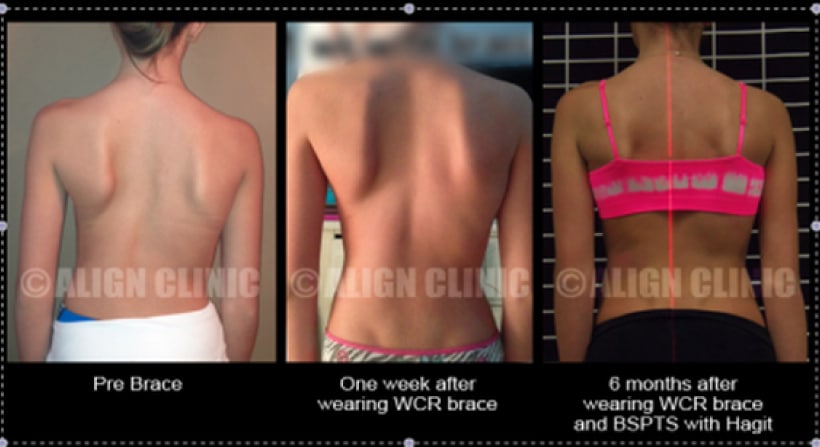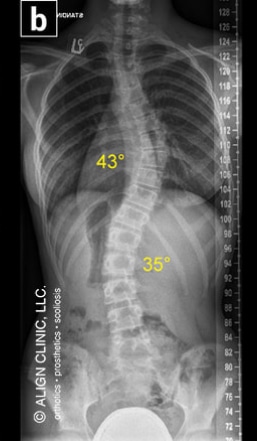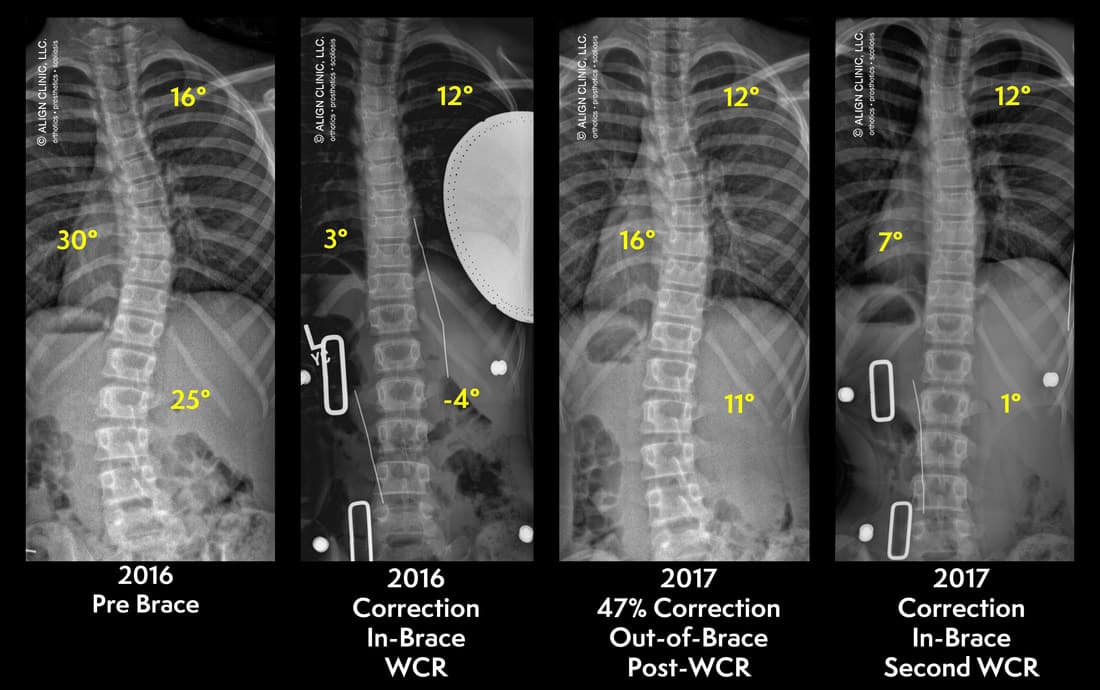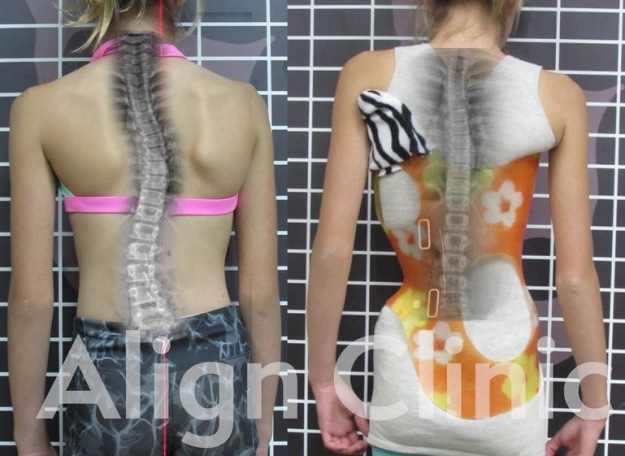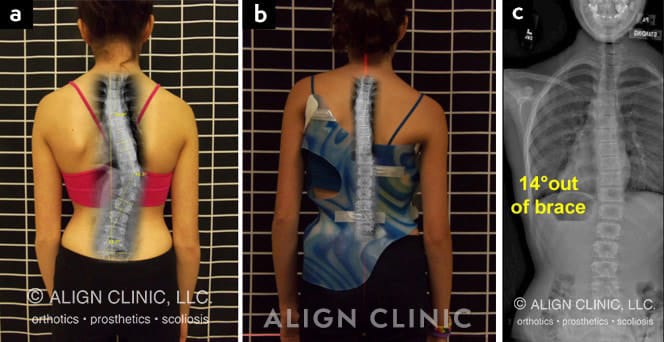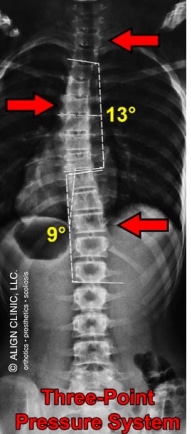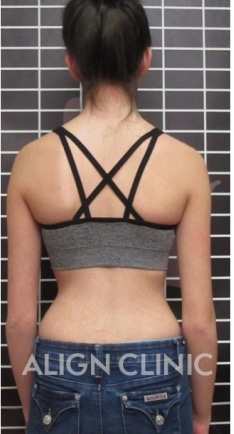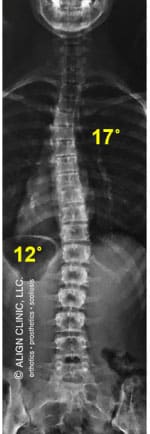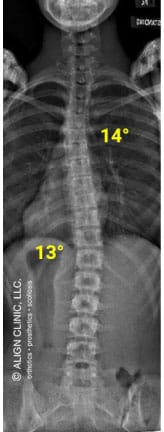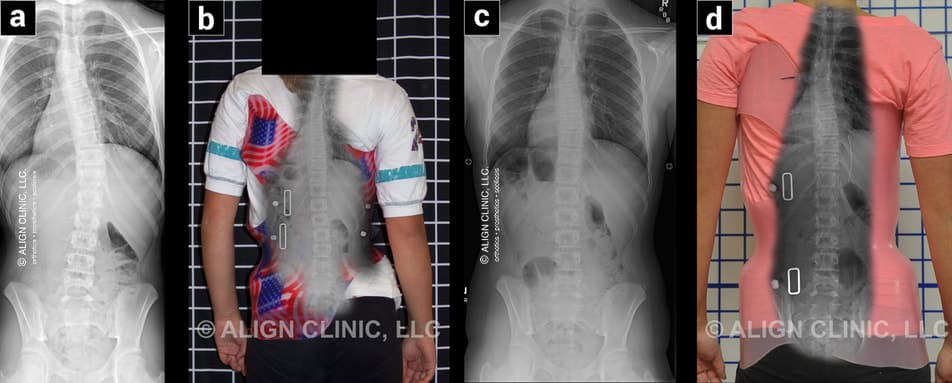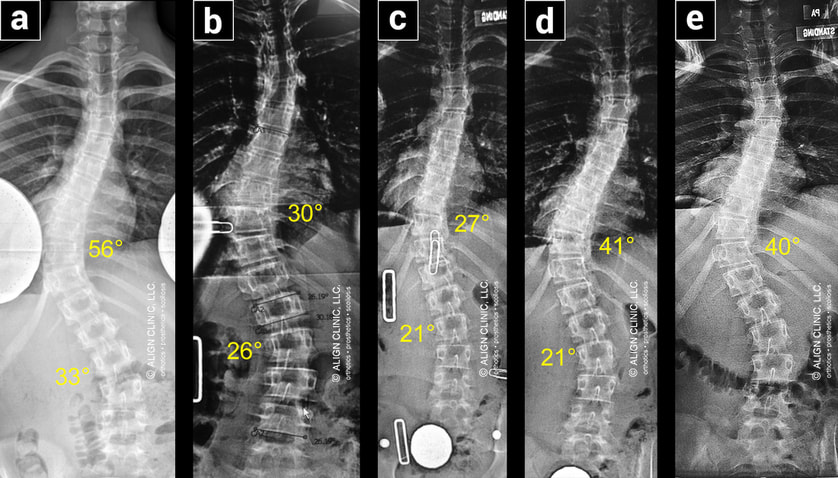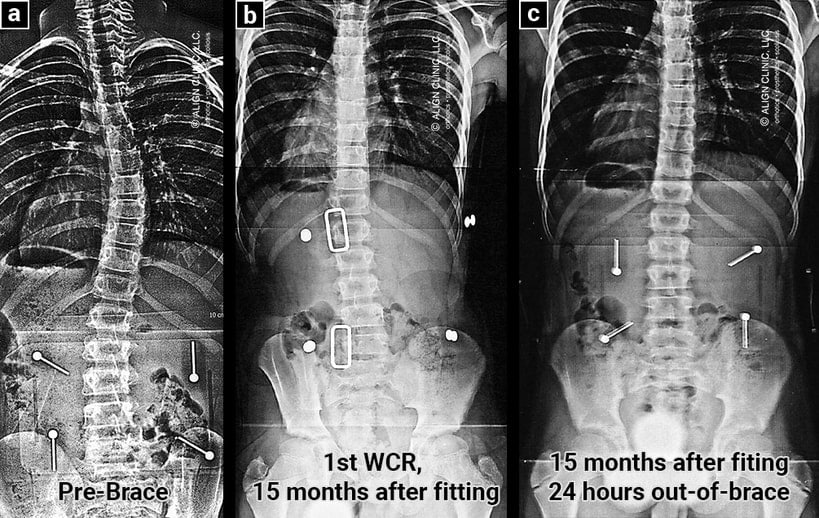Adolescent Idiopathic Scoliosis
Cheneau Type Brace Using the Rigo Classification of Scoliosis and Brace Design with the WCR Brace
Purpose
The purpose of the SOSORT 2014 brace contest is to share with scoliosis professionals how different scoliosis brace techniques are utilized and applied to treat the same patient with idiopathic scoliosis (IS). The purpose of this poster is to present to scoliosis professionals how a specific technique is utilized to treat a patient with IS.
Case Presentation
This brace contest entry reviewed the case of a 10-year-old girl diagnosed with IS (Figure 1). The patient presented with a right low thoracic curve of 40 degrees Cobb angle (Figure 2). The apex of the right curve was at T11, and therefore would be a thoracic curve according to the SRS. The upper end plate of the thoracic curve did not extend as high as a typical A type scoliosis case. The A1 type brace was fabricated with the left axilla pad being lower than usual due to the short thoracic curve. The right thoracic pad was placed lower than usual and started applying pressure below the T11 apex and going upward to above the apex. The E2 type brace was considered, but the classification criteria better fit the A1 type scoliosis according to the Rigo classification of scoliosis, since the apex was at T11. (Rigo M, Villagrasa M, Gallo D, 2010, see Figure 3).
The author classified, designed and fabricated a hand-made Cheneau-type brace using an A1 model following the Rigo classification of scoliosis (Figure 4). The brace design was determined by the x-rays and clinical photos only. No physical examination was performed by the author. The brace was fabricated from a scan of the patient which was carved with a Rodin carver, and subsequently hand-modified by the author.
Method
The differences between the original Cheneau brace and the author’s Cheneau-Rigo handmade type brace are the following:
- The brace was designed using the Rigo Classification of scoliosis and brace design. by Manuel Rigo
- The new Cheneau brace follows the current design shapes taught by Manuel Rigo, MD. Thus, it is a Cheneau-Rigo handmade type brace
- The brace was handmade by the author and it is the author’s personal version of the Cheneau-Rigo brace, thus the name follows the evolution of the brace, Wood Cheneau Rigo (WCR) brace (Figure 5).
Brace Design and Function
The general correction principle is detorsion and sagittal normalization. This effectively corrects the coronal plane, resulting in some elongation of the spine without any significant distraction forces. (Dubousset J, 1992; Cheneau J, 1996).
The A1 type WCR brace was fabricated (Figure 5). The derotation forces in the transverse plane are demonstrated in a WCR brace in Figure 6. Sagittal plane normalization and derotation are achieved by elongation of the spine as well as the ventral and dorsal pressure systems, as demonstrated in an A1 type scoliosis brace in Figure 7.



